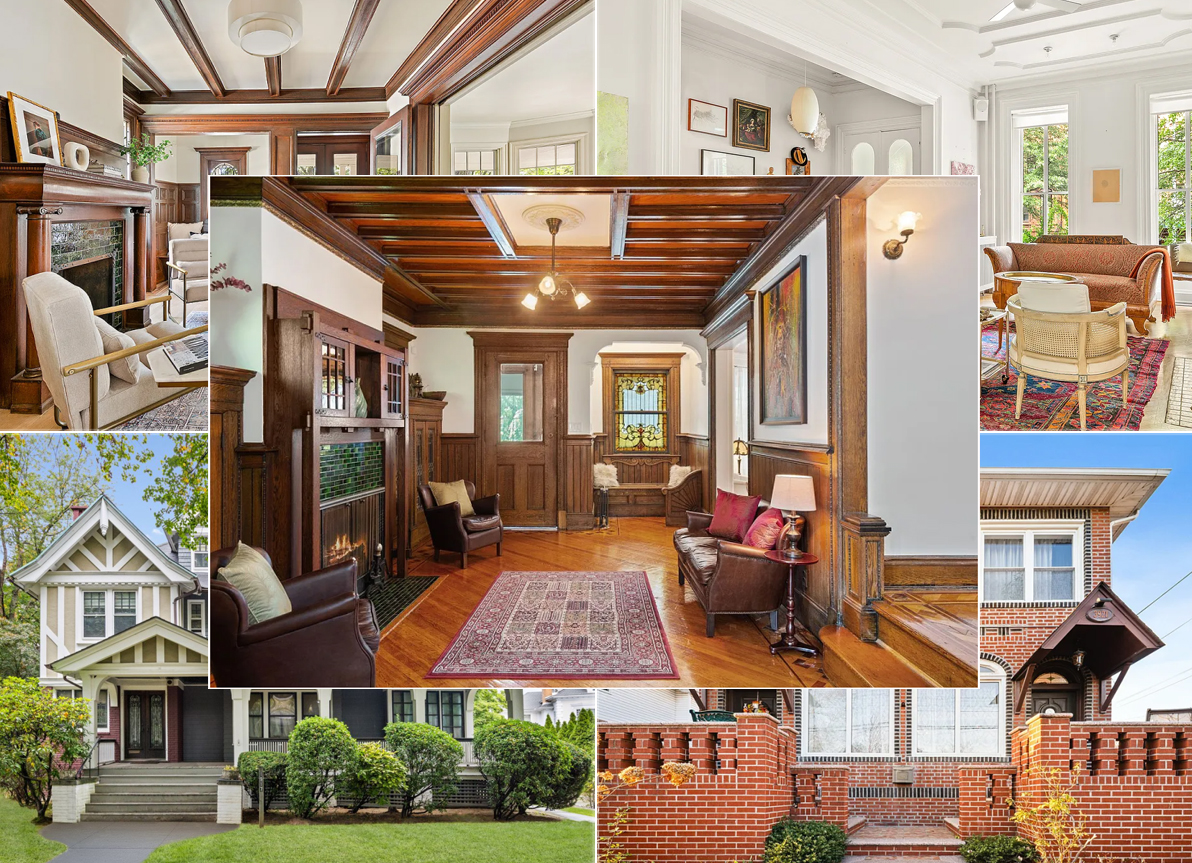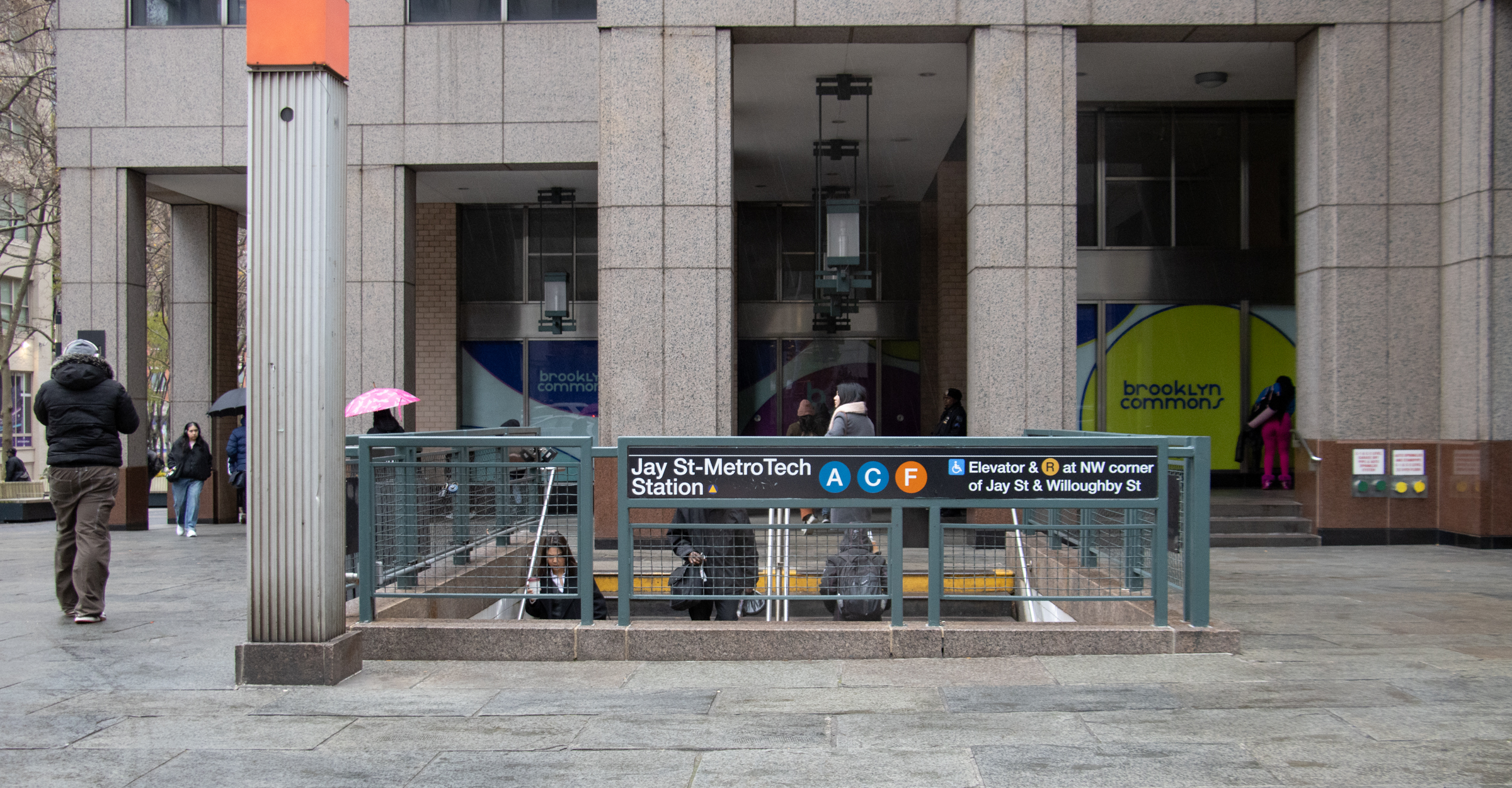Walkabout: By Justice Possessed, Part 1
Brooklyn has had its share of famous people, but very few were of the influence and stature of Henry Ward Beecher. He was an amazingly complex man, with the religious zeal of a Billy Graham, the oratorical gifts of a Martin Luther King, Jr., the showmanship of a P.T. Barnum, and the marital infidelity and…


Brooklyn has had its share of famous people, but very few were of the influence and stature of Henry Ward Beecher.
He was an amazingly complex man, with the religious zeal of a Billy Graham, the oratorical gifts of a Martin Luther King, Jr., the showmanship of a P.T. Barnum, and the marital infidelity and scandalous downfall of a Tiger Woods.
Add to that the societal mores of Victorian Brooklyn, a couple of enemies looking for weakness, an eager press, and you’ve got the makings of a great tale. Most Americans have heard of Henry Ward Beecher, and many have heard of the scandal and trial that almost ruined him. If you haven’t, well…sit back.
Henry Ward Beecher was born in Connecticut in 1813. His father, Lyman Beecher, was also a preacher, and Henry was the eighth of nine children.

His next eldest sister, Harriet Beecher Stowe, became almost as famous as he, as the author of Uncle Tom’s Cabin. She and her sister Catherine were authors and lecturers, with books and articles about home management and other topics for women.
Another sister, Isabella Beecher Hooker, as well as his brothers, Rev. Thomas K. Beecher and Charles Beecher, also gained great prominence for their social activism and work on education.
The Beecher children grew up in a very strict home, giving new meaning to the phrase preacher’s kids. They were required to participate in family prayer morning and night, participate in all phases of their father’s church services and ministries, including prayer meetings, lectures and other services.
They were forbidden to engage in undue frivolity and they did not celebrate Christmas or their birthdays, or participate in dancing, or the reading of common and popular fiction.
In spite of this strictness, Lyman Beecher also taught his children the importance of social reform, and encouraged an opposition to slavery, prostitution and the use of alcohol.
After college, seminary and some preliminary church postings, Henry Beecher was hired to be the first minister of the new Plymouth Congregational Church in Brooklyn. This was in the fall of 1847.
He and his wife, Eunice, and their three children, came to Brooklyn to become the first minister and family to lead a new church comprised of New England Congregationalists who wanted to worship simply, as they did back in New England.
This was a wealthy group, comprised of the successful merchant princes and ship owning New Englanders who made their fortunes in Brooklyn and Manhattan ports. They built a church on Cranberry St. and Rev. Beecher and Plymouth Church began their long and rich association.
It was soon apparent that Beecher was more than just a good religious speaker. The man had it, that undeniable, yet elusive gift of charisma and leadership, aided by a dynamic speaking style that soon was packing the pews.

Two years after taking the helm, Plymouth Church had a fire, and Rev. Beecher pushed for a new and larger church to accommodate the crowds of people coming to worship, and the brownstone church on Orange Street was built.
The architect was Joseph Wells, a well-known church architect. But when it came to the interior design of the sanctuary, Henry Ward Beecher took control of the space.

He designed America’s first auditorium, or theater plan church, a vast space with no center aisle, with seats curved towards the pulpit, both on the floor and above in the balcony. The church now had space for 2,800 people, and there was rarely an open seat on Sunday’s.
In addition to Sunday services, Beecher was the author of a successful biography of Jesus, several other inspirational books and pamphlets, and the editor of the very first church hymnal.
It seems hard to believe for any church goer, but until he put together his Plymouth Hymnal in 1855, churches did not have one book that printed the words and music of the hymns and songs used in services on the same page.

Hymn mumblers and tune scramblers alike, for the last 160 years, can thank Henry Ward Beecher for this innovative step in public Christian worship.
So what was he preaching? Social justice. Henry Beecher believed Christianity had the power to change culture, and that individuals could rise above the sin in the general society, and rid that society of its ills.
And mid-century Victorian society had a lot of ills to purge. He hated bigotry religious, racial and social. And more than that, he absolutely loathed and hated the peculiar institution of slavery.
He had grown up in a slavery hating home, and all of his siblings and he were active Abolitionists. His sister’s famous book, Uncle Tom’s Cabin, was a biting condemnation of slavery, which influenced thousands.
From his pulpit in Plymouth, Beecher thundered down his opposition to slavery and those who supported and maintained it. His sermons moved audiences to tears, to anger, and to action.
He led Plymouth Church on the dangerous path to becoming one of the most active stations on the Underground Railroad, the path escaped slaves would take to reach the North, and on to Canada, and freedom.
We often see Railroad stops in old houses and think it was a great adventure for those making their way north, but it was dangerous, and illegal, and death and/or imprisonment could be the consequence of escape or harboring escapees.
Although slavery was abolished in New York State in the 1820’s, it was still illegal to harbor escaped slaves, or to help, or employ them. Slave catchers or former owners were within their legal rights to capture people off the streets, and return them to slave holding states.
Just being in NY was not enough, it soon became very apparent that true freedom for escapees lay in Canada, beyond America’s borders and jurisdiction.
Henry Ward Beecher was not above high degrees of showmanship and spectacle to prove his point. He invited guest speakers to his church to talk about the evils of slavery.

Frederick Douglass, Harriet Tubman, and other former slaves talked about the horrors of the institution. His sermons shocked and horrified his upper class genteel congregation, so far removed from the atrocities they heard about.
He raised thousands of dollars for Abolitionist causes. On more than one occasion, he held mock slave auctions from his pulpit, allowing his congregation to collect money to buy real people away from their owners.
His most famous auction was the mock sale of a little girl named Pinky.
Pinky’s sale was right out of a Victorian novel. Actual records and photos tell us that she was bi-racial, a pretty child who looked more white than black, with long hair and Caucasian features.

She was hardly typical of your average African descended slave, but because it only took one drop of African blood to keep one in slavery, she was not free.
Beecher knew his audience, and in a masterful stroke of both righteous persuasion and melodramatic showmanship, he sold her to the crowd, praising her physical attributes, describing how the auctioneer would sell her, and how the leering audience of men at a real auction would regard her, and what her fate would be.
She looked like their sisters, their daughters. Women in the congregation were swooning; men were reduced to helpless tears and were rising to their feet in outrage at her humiliation and shame.
If there had been an actual slave holder in the room, they probably would have ripped him to shreds. Instead, they opened their wallets and raised $900 to free her, the equivalent of millions in today’s money.

In the collection plate was a gold ring that Beecher presented to Pinky, which she had for the rest of her life. She would return it to the church, in 1927, at Plymouth’s 80th anniversary, and it is still among their most prized possessions, along with her bill of sale.
Pinky’s sale would make national news, and bring even more people to crowd the entrance to Plymouth Church to hear Rev. Beecher preach.
He held several more “auctions”, always with pretty, amost-white girls and young women, who were then rescued from slavery. One has to wonder if the reaction would have been the same with dark complected African-featured women and girls, or young men.

But, he was effective. He held up the chains that had held John Brown, and trampled them under his feet. He raged and railed, and by the beginning of the Civil War, he had put the Abolitionist cause on the front pages of the New York press, and in the drawing rooms of the wealthy and influential everywhere.
Beecher’s charisma and influence brought would-be presidents and celebrities to his church, along with thousands of the curious and the faithful. It also made him some enemies.
Power and arrogance can cause many a person to think anything they do is justified by who they are. Beecher was to find that this was not the case, and enemies will use anything to get back at you, seeking to destroy you. The tale and the scandal continue on Thursday.





BedStuyMaven – I wonder if the show you saw on TV was Traces of the Trade? It’s a documentary made by my sister about the journey she goes through upon discovering our ancestors were Rhode Island slave traders. The film aired on PBS’s POV a couple years ago. Anyway, it is a difficult issue to be sure and her aim now is to be part of the dialogue between races in America as we confront the realities of our past together. I am a member of Plymouth Church and an forever intruiged by the role Beecher and the church played in our nation’s history.
Alexander Hamilton family background is very questionable. I have a uncle that kinda looks like him. My own family half free early in the colonial period (still trying to figure out how) continued to live in Mulatto communities in south eastern Virginia and only started leaving around 1900 for places like New York and points northward. My grandfathers grandmother who was born a mulatto slave in 1850 to two blond hair light eyed slaves that looked “white”. Most southern families are related both black and white which makes it crazy to think that people could treat members of there own family so harsh throughout American history.
Alexander Hamilton wrote letters to his friends about how uncomfortable he felt as a guest at Monticello. Several of the slaves were much paler, in terms of skin color, than the dark-featured Hamilton, who hailed from the West Indies.
You did not have to tell me to sit back. I sat back after scandal and Tiger Woods. I can’t wait until Thursday.
To Minard Lafever point about salvery. This is so true. A few year back, I saw a white woman on TV from wealth Vermont family. She was free of any “white guilt” until she researched her family and learned that while her forebearers did not own slaves in the US, they were involved in shipping and owned a plantation in Cuba. On the show she cried lamented her white priviledge.
Of course my solution to her problem was to donate all the proceed from her book and the bulk of her inheritance to the United Negro College fund, but I am a cynic.
The statue next to the church, with the two Edmonson sisters being protected by Henry, is incredibly haunting.
Pinky called Sarah or Sally Maria Diggs later Mrs. James Hunt, of Washington, D. C., returned. She was born a slave in 1851 in Port Tobacco, Charles County, Md. When she was seven years old her mother and two brothers were sold to a Virginia plantation; she never saw them again. Soon after, she and her grandmother were sold to a slave trader in Baltimore. Later her grandmother purchased her own freedom, lacked money to do as much for “Pinky.” But in 1860 the grandmother thought of appealing to Henry Ward Beecher, already famed as an anti-slavery speaker. Learning that “Pinky’s” owner valued her at $900, Beecher staged the “auction,” raised $1,100 in excess of the amount needed.
I think this move was brilliant on Beecher part to educate the people of Brooklyn on the evils of slavery. There were 400,000 mulatto slaves in America by the Civil War mostly in VA, MD, NC and LA. Over half I am sure looked like little Pinky or someone white family.
we used a photo of the statue on the cover of our second issue: montaguestreetjournal.com
…It’s a shame that any of us has to meet Beecher this way: the silent moral giant, majestic and frozen in his commitment to freedom. By contemporary accounts, Beecher seems to have exemplified Daniel Kramer’s wonderful description of Bob Dylan circa 1964 as “a
self-contained unit of communication. 
Lots of people pass by without looking, but at the norther end of Columbus Park (at Johnson St.), a statue of Henry Ward Beecher stands tall on a pedestal with three young women reaching up to him. Pinky on one side and two white women (IIRC) on the other. For quite a while, the Parks Department thought that this was a great spot to put their recycling bins. Then one day, a couple of years ago, they were gone, I hope because they finally realized the sacrilege of their location.
People always assume people need ot be either totally just or totally wicked. In-between? It screws up their brains and understanding. But humans are all complex.
Supposedly there are more slaves today then in Civil War times. Sex slaves, a large majority.